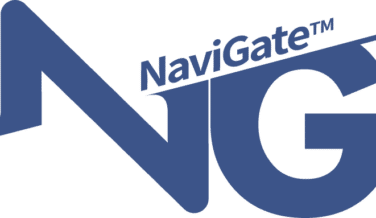With the right software solutions, operators can deploy a revenue-generating service strategy that delivers more powerful, more efficient and more reliable solutions to their subscribers.
Change is happening at a stunning pace
In today’s fast changing technological environment, consumers are flooded with options for communication and entertainment. Disruptive and less expensive connected home and entertainment services are becoming more and more popular. The value generated by these new services represents an important opportunity for operators who cannot differentiate forever on access speeds alone. To benefit from these opportunities, operators need to develop a solid service strategy that will give them easy access to future revenues and reinforce consumer loyalty.
This service strategy must resonate with 3 major types of trends observed in our industry
- Behavioral TrendsPeople have now well adopted the on-demand consumption model with services such as Netflix, Spotify or TV replay services. This form of content consumption has been largely promoted through social networks as people feel the need to share what they liked and also through the way TV series are made to captivate their audience. Social interactions are important here to get recommendations and to be guided through the large amount of content available. This is indeed one of the main challenges today, as people can feel overloaded with so much content distributed through so many platforms.This appetite for content consumption has also been accentuated with the improvements of device screens, sound, picture quality and access networks speeds. It is now easier than ever to access any content, with very good quality, on mobile devices or at a location outside of the home. This is part of a larger hyper-connectivity trend encompassing not only connectivity to the access network and services, but also connectivity between devices themselves for the internet of things, for example, or Wi-Fi coverage.
- Technology trendsOn the technology side, several trends should also be taken into account in operators’ service strategies to support these behavioral trends. To leverage the ever-growing number of content platforms and applications for the home, operators need to turn towards CPE platforms and software solutions that can quickly and efficiently aggregate these services. This is made possible by platforms such as Android TV, RDK or OpenWRT which also present the advantage of being industrial scale software. They can be complemented with cloud processing solutions to offload complex data analytics from the devices, or content search results aggregated from different service platforms.On the network side, the price decreases of 4G data plans and the rapid progresses made in 5G, including fixed wireless access, make possible the consumption of content everywhere, at any time and with high connectivity speed. Finally, the distribution of this content within the home is now being facilitated with technologies like Wi-Fi 6, 6E, EasyMesh and other wireless technologies like Bluetooth 5.0. which are ready to facilitate IoT services.
- Business trendsNeedless to say, the current challenging environment forces operators to reduce their Opex and Capex expenditures. To cope with behavioral and technology trends, Service providers are engaged in a race to drastically reduce their time to market. This is why the industry is moving so quickly to an open platform approach that reuses existing and proven code, as well as “software-augmented” hardware to reduce their total cost of ownership.Another interesting business trend is collecting user data to predict user and network issues, with said data also being monetizable for targeted advertising or marketing purposes, for example.
All of the above-mentioned trends are setting the scene for more and more software-oriented strategies, supported by a CI/CD (Continuous Integration / Continuous Delivery) approach to stay agile by continuously monitoring what can be improved and how to make services evolve smoothly over time.
A strategic software approach that is critical to enabling new business models
As operators are developing their strategies for the next generation services, they need to take into account several parameters regarding their software choices. In particular, this approach must be based on solutions that are apps-ready and leverage an ecosystem of partners to accelerate the pace of innovation and time to market of new services, while also handling life cycle management. Interoperability is also a key asset to creating synergies between hardware, software, connectivity and backend while ensuring backward compatibility with existing solutions, if possible. As we have explained above, this strategy must also be data-driven to monitor usage, performance and to predict user trends, issues, and expectations. And as data is a sensitive topic, software choices must offer a high level of security, being able to protect both content and customer data while running in a trusted environment with app certification.
Technicolor, – known as Vantiva -, Software Solutions deliver value for Connected Home customers
With the right software solutions, operators can deploy a revenue-generating service strategy that delivers more powerful, more efficient and more reliable solutions to their subscribers. To help operators augment their consumer premises equipment with value added services, Technicolor has developed a portfolio of software solutions to generate both revenue and user satisfaction while answering today’s industry challenges and trends.
Voice control to improve content search and device control
Wi-Fi optimization to reduce TCO (Total Cost of Ownership) and improve performance
Customer satisfaction tools to maintain subscriber engagement
Analytic tools to allow for more service personalization
OTT video solutions to answer strong consumer demand, including live sports
Cloud gaming to open up new business opportunities with this new type of video content
Home applications to make home the new playground of apps developers
Personalized advertisements to subsidize a service or hardware











